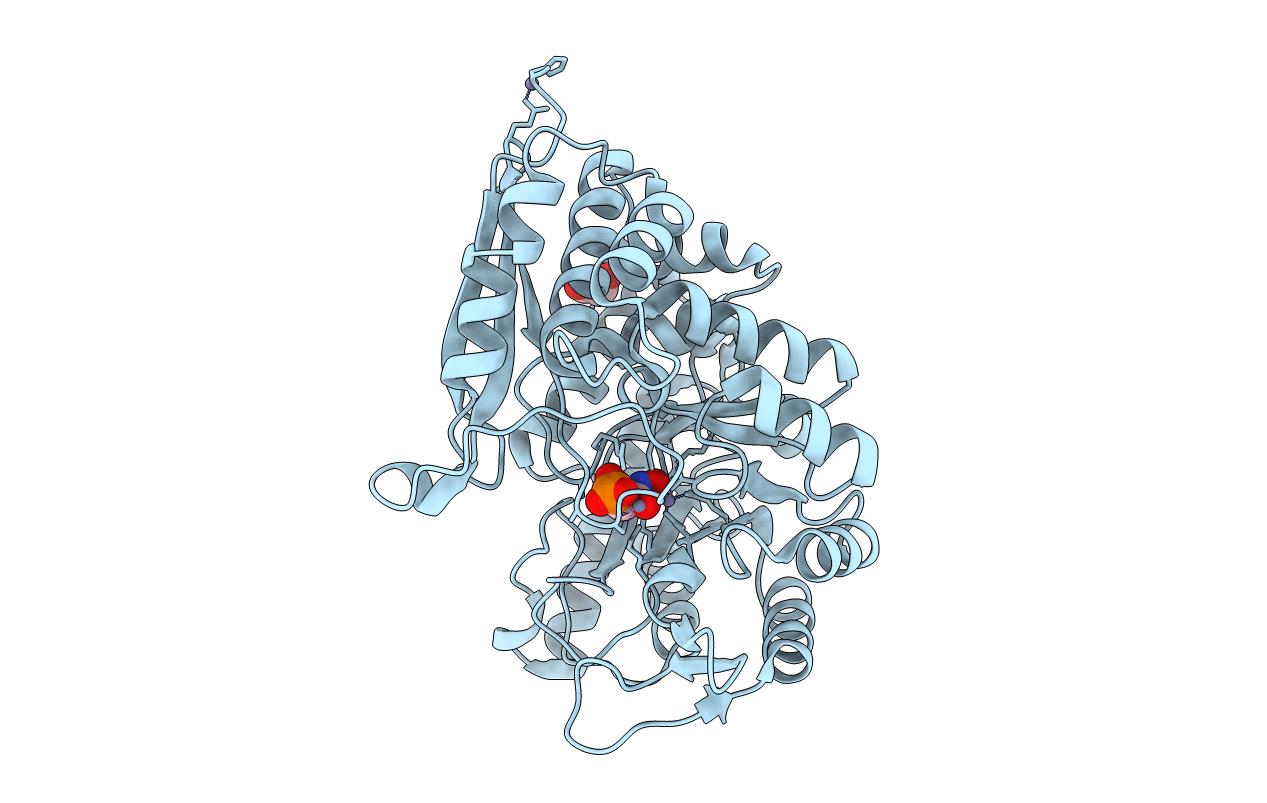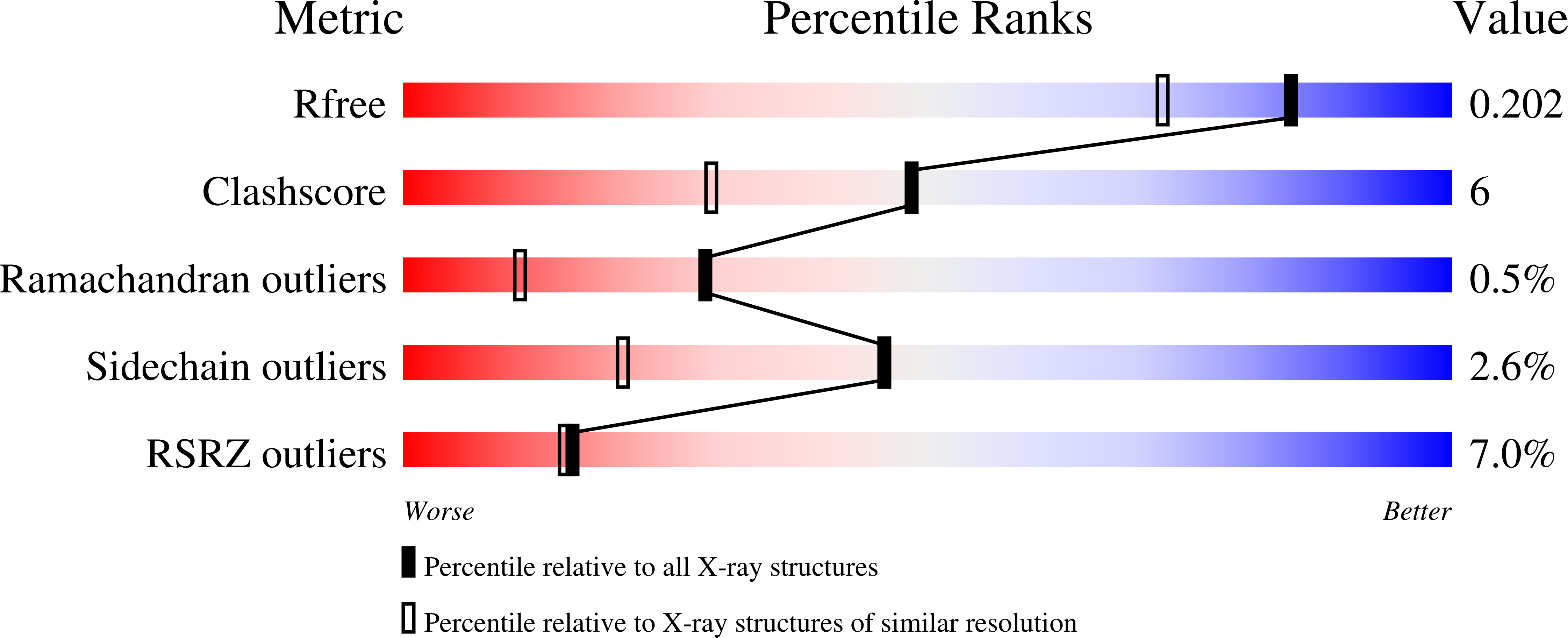
Deposition Date
2007-05-08
Release Date
2007-11-20
Last Version Date
2023-08-30
Entry Detail
PDB ID:
2PTZ
Keywords:
Title:
Crystal Structure of the T. brucei enolase complexed with phosphonoacetohydroxamate (PAH), His156-out conformation
Biological Source:
Source Organism:
Trypanosoma brucei (Taxon ID: 5691)
Host Organism:
Method Details:
Experimental Method:
Resolution:
1.65 Å
R-Value Free:
0.20
R-Value Work:
0.16
R-Value Observed:
0.16
Space Group:
C 2 2 21


